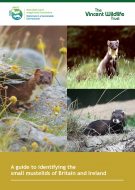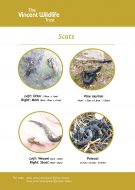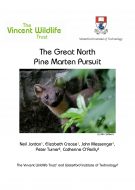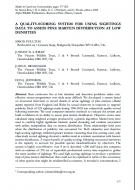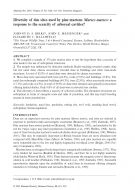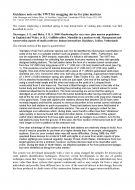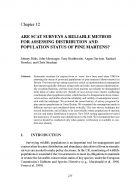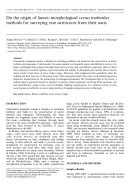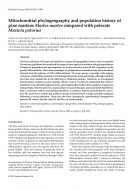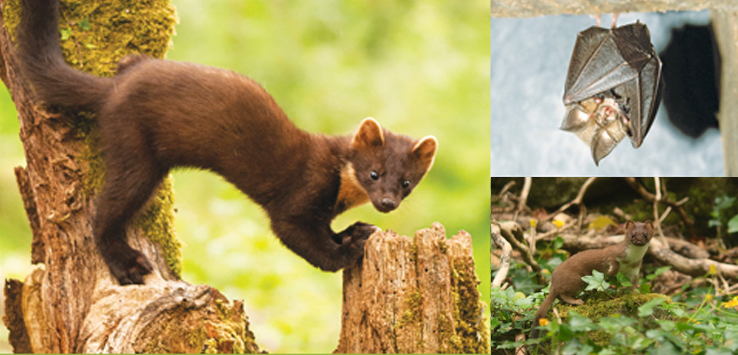Resources | Pine marten
-
A guide to identifying the small mustelids of Britain and Ireland
The small mustelids are characterised by their long thin body shape, which enables them to follow their prey down small tunnels and burrows. However, because of their similar body shape they can be difficult to distinguish from each other. This guide helps with the identification of the mustelid family.
Download -
Quick-start guide to the identification of small mustelids
This ‘quick-start’ guide shows the distinguishing features of members of the small mustelid family in Britain and Ireland, which includes the otter, pine marten, polecat, polecat-ferret, mink, stoat and weasel. It also shows common small mustelid tracks and signs.
Download -
Jordan, N. et al. (2011). The Great North Pine Marten Pursuit Report
The Great North Pine Marten Pursuit surveys were initiated in order to collect pine marten DNA from extant populations of England. They aimed to determine the presence of pine martens in specific areas, and so allow a focussing of future conservation resources in those areas; and to determine the genetic haplotype of the pine martens.
Download -
Jordan, N. (2011). Strategy for restoring the pine marten to England and Wales
Although sightings reports and occasional genetic evidence confirm the presence of the pine marten in parts of England and Wales, limited success in their detection despite concerted efforts suggest that they are not abundant and that populations have failed to recover from their historical decline.
Download -
Poulton, S. et al. (2006). A quality scoring system for pine marten sightings
Rare carnivores live at low densities and detection problems make cost-effective census programmes over wide areas difficult. We developed a system based on structured interviews to record details of ad hoc sightings of pine martens reported in England and Wales by casual observers in response to targeted publicity.
Download -
Birks, J. et al. (2005). Diversity of den sites used by pine martens
Dens are an important resource for pine martens and sites are selected in response to predation risks and energetic constraints. We compiled a sample of 370 pine marten dens to test the hypothesis that a scarcity of sites leads to the use of suboptimal structures.
Download -
Messenger, J. E. & Birks, J. (2000). Guidance note on a fur snagging system for pine martens
A guidance note on a system employing a stretched spring to trap dorsal hairs of pine martens which can then be subjected to DNA analysis. This advice note includes the construction, deployment and maintenance of this system used for collecting hair samples from pine martens as they visit specially designed baiting stations.
Download -
Birks, J. et al. (2004). Are scat surveys a reliable method for assessing distribution of pine martens?
Systematic searches for marten feces or ‘scats’ have been used since 1980 for assessing the status of protected populations of pine martens in Britain. This report reviews the recent history of survey programs for pine marten populations in Britain and examines the accuracy of marten scat identification in the field.
Download -
Davison, A. et al. (2002). On the origin of faeces: morphological versus molecular methods for surveying rare carnivores from their scats
Charismatic mammals remain a linchpin in attracting publicity and funds for the conservation of native habitats and organisms. Unfortunately, the same animals are frequently scarce and difficult to survey. For many, confirming their presence through faecal surveys is the only cost-effective approach.
Download -
Davison, A. et al (2001). Mitochondrial phylogeography and population history of pine martens compared with polecats
The flora and fauna of Europe are linked by a common biogeographic history, most recently the Pleistocene glaciations that restricted the range of most, if not all, species to southern refugial populations. Changes in population size and migration, as well as selection, all left a signature on the genetic differentiation that is present today.
Download


